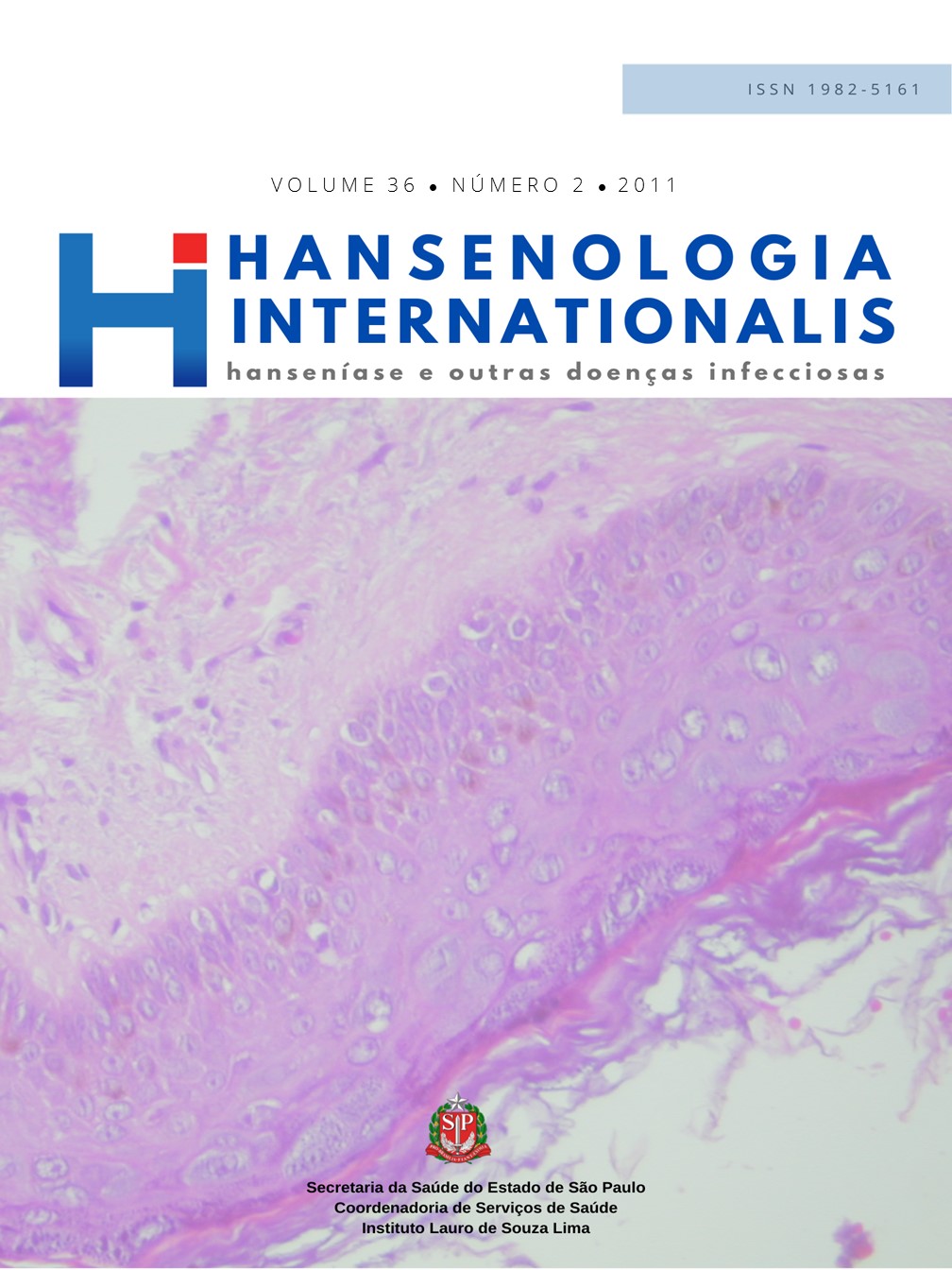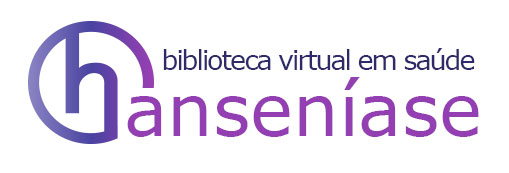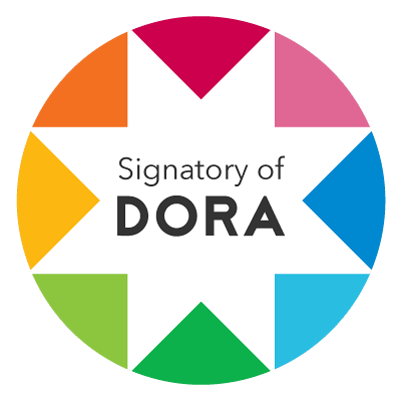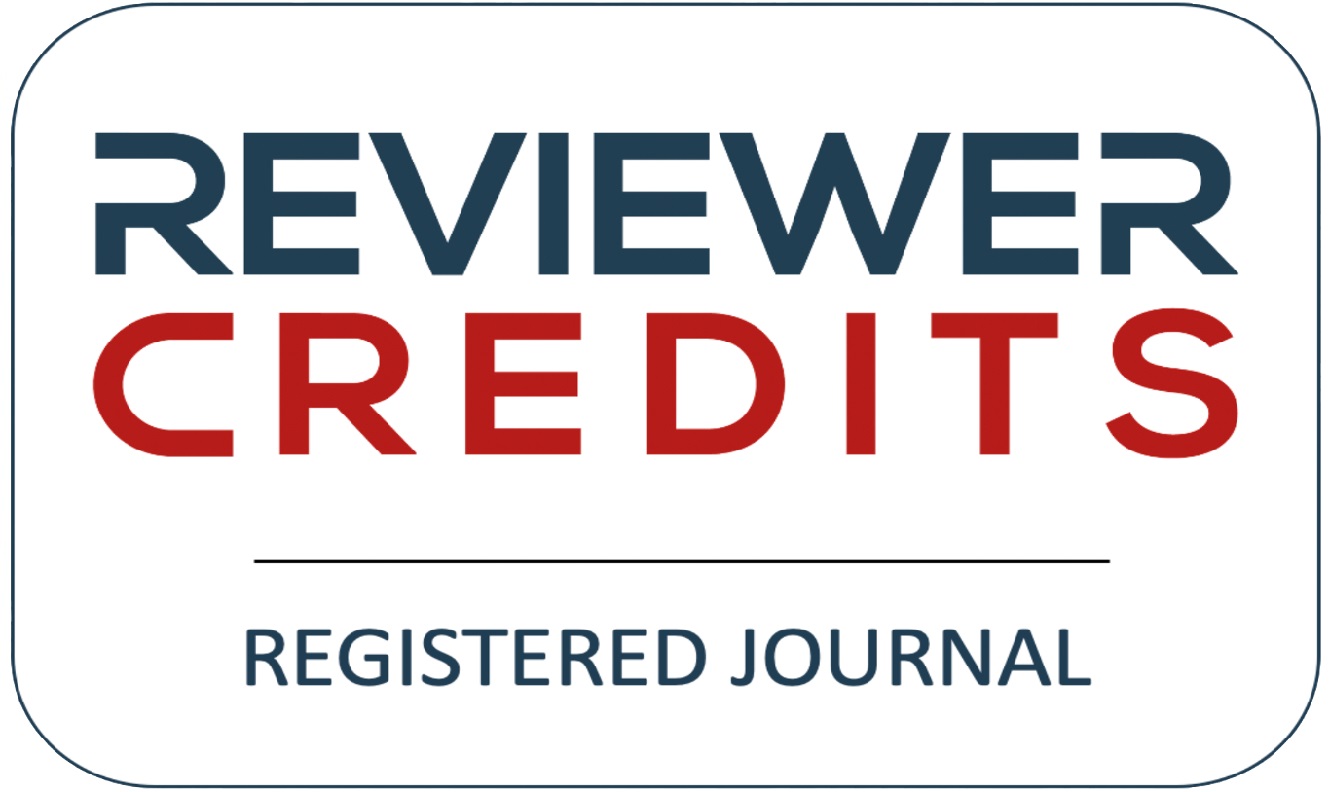Leprosy dual paradigm control or elimination: the critical period 2000-2005
DOI:
https://doi.org/10.47878/hi.2011.v36.36206Keywords:
leprosy, control, eliminationAbstract
INTRODUCTION One of the main tendencies of leprosy worldwide is the simultaneous action of non governmental organizations and official agencies operating eventual different strategies. This paper aims to contribute to such question focusing on some outstanding aspects of respective contemporary evolution. METHODS Application of bibliographic review and contents analysis techniques to primary data from a circumstancial set of open circulation specific publications. RESULTS Successive disagreements registered between both parts refer to the objective to be attained by the fight against the disease, if control or elimination. CONCLUSIONS New perspectives of jointed actions are being searched for now when
priority on endemics control is more realistically assumed and social determination is been really considered.
Downloads
References
Cadernos Saúde Pública 2003; 19 (2): 663-666.
2 Brasil Ministério da Saúde. Rede Interagencial de Informações para a Saúde. DATA-SUS. Programa Nacional
de Eliminação da Hanseníase/DEVEP/SVS/MS Disponível em: http://hanseniase.datasus.gov.br / hans/hans.htm,2004.
3 São Paulo. Campanha de Combate à Hanseníase 2011. São Paulo, Programa Estadual de Controle da Hanseníase, http://www.cve.saude.sp.gov.br
4 WHO. World Health Organization. Leprosy. Weekly Epidemiological Record, Geneva, Switzerland, 2001; 76 (23):173-179.
5 WHO. World Health Organization. Leprosy. Report on fifth meeting of the WHO technical advisory group on elimination of leprosy. Geneva, Switzerland. Disponível em: http:// www.paho.org/English/AD/DPC/CD/lep-tag-5th-mtg-2003.htm, 2003.
6 WHO. World Health Organization. Leprosy. Leprosy elimination campaigns. Weekly Epidemiological Record, Geneva, Switzerland 2002; 77 (3): 17-20.
7 Porter JDH, Ogden JA, Ranganadha Rao PV, Prabhakar Rao V, Rajesh D, Buskade RA. et al. Lessons in integration - operations research in an Indian leprosy NGO. Leprosy Review 2002; 73: 147-159.
8 Aquino D, Santos JS, Costa JML. Avaliação do programa de controle da hanseníase em um município hiperendêmico do Estado do Maranhão, Brasil, 1991-1995. Cadernos Saúde Pública 2003; 19 (1): 119-125.
9 Gonçalves A, Gonçalves NNS. Organizações internacionais e controle da hanseníase no Brasil. Hansenologia
Internationalis 1986; 11 (1/2): 74-77.
10 Mantellini, GG, Gonçalves, A. A revisão e a análise como metodologias científicas conteudísticas. Inter Science Place 2009; 2 (5):1-13.
11 ILEP. International Federation of Anti-leprosy Associations. Working together for a world without leprosy - ILEP strategy 2005-2010. Disponível em: http://217.77.176.141/documents/strat05.pdf, 2005.
12 ILEP. International Federation of Anti-leprosy Associations. Guia para a reabilitação sócio-econômica de pessoas afetadas pela hanseníase. Londres: ILEP; 1999. 78 p.
13 ILEP. International Federation of Anti-leprosy Associations. The interpretation of epidemiological indicators in leprosy. London: ILEP; 2001. 25 p.
14 ILEP. International Federation of Anti-leprosy Associations. Second meeting of the ILEP Technical Commission. London, Disponível em: http://www.ilep.org.uk/documents/itcjun2004eng%20.pdf, 2005.
15 ILEP. International Federation of Anti-leprosy Associations. Report of the technical forum: implications for leprosy control programmes. Leprosy Review 2002; 73: S1-S62.
16 ILEP. International Federation of Anti-leprosy Associations. Annual report 2003-2004. The situation of leprosy activities supported by ILEP Member-Associations in 2003. London: ILEP; 2004: 1-89.
17 ILEP. International Federation of Anti-leprosy Associations. First meeting of the ILEP technical commission.
Disponível em: http://www.ilep.org.uk/documents/itcfeb2004eng%20.pdf, 2004.
18 ILEP. International Federation of Anti-leprosy Associations. 3rd meeting of the ILEP technical commission.: http://www. ilep.org.uk/documents/itcdec2004eng.pdf, 2004.
19 ILEP. International Federation of Anti-leprosy Associations. Annual report 2003: directory of research projects supported by ILEP members 2004. 32 p.
20 Aseffa A, Brennan P, Dcrell H, Gilis T, Hussain R, Oskam L, Richardus JH. Report on the first meeting of the IDEAL (initiative for diagnostic and epidemiological assays for leprosy) Consortium held at Armauer Hansen Research Institut, ALERT, Addis Ababa, Ethiopia on 24-27 October 2004. Leprosy Review 2005; 76: 147-159.
21 Castro G. Transformação social por meio do movimento Sorri: do isolamento à inclusão. : Gonçalves A, Gutierrez G, Vilarta R. Gestão da Qualidade de Vida na empresa. Campinas: Preac/Unicamp; 2005. p. 65-70.
22 Morhan. Jornal do Movimento de Reintegração das Pessoas Atingidas pela Hanseníase. Disponível em: http://www.morhan.org.br/jornal 01.pdf, 2004.
23 Ji B. Comments on the report entitled “independent evaluation of the Global Alliance for the Elimination of Leprosy”. Leprosy Review 2004; 75 : 217-220.
24 Braber KL. An evaluation of GAEL, the Global Alliance for the Elimination of Leprosy. Leprosy Review 2004; 75: 208-213.
25 Durston, T. What lessons can we learn from the evaluation of GAEL? Leprosy Review 2004; 75: 214-216.
26 Daumerie, D. Independent evaluation of GAEL. Letter to the editor. Leprosy Review 2004; 75: 407-408.
27 Feenstra,P, Pannikar V. Partnership for sustainable leprosy control beyond 2005. Leprosy Review 2005; 76: 194-197.
28 Vega J, Irwin A. Tackling health inequalities: new approaches in public policy. Bulletin of the World Health
Organization 2004; 82 (7): 482-483.
29 Mackenbach JP, Bakker MJ. Tackling socioeconomic inequalities in health: analysis of European experiences. Lancet 2003; 362: 1409-1414.
30 Oliveira MP, Romanelli, G. Os efeitos da hanseníase em homens e mulheres: um estudo de gênero. Cadernos Saúde Pública 1998; 14 (1): 51-60.
Downloads
Published
How to Cite
Issue
Section
License

This work is licensed under a Creative Commons Attribution 4.0 International License.
This journal is licensed under a Creative Commons Attribution 4.0 International License.


























